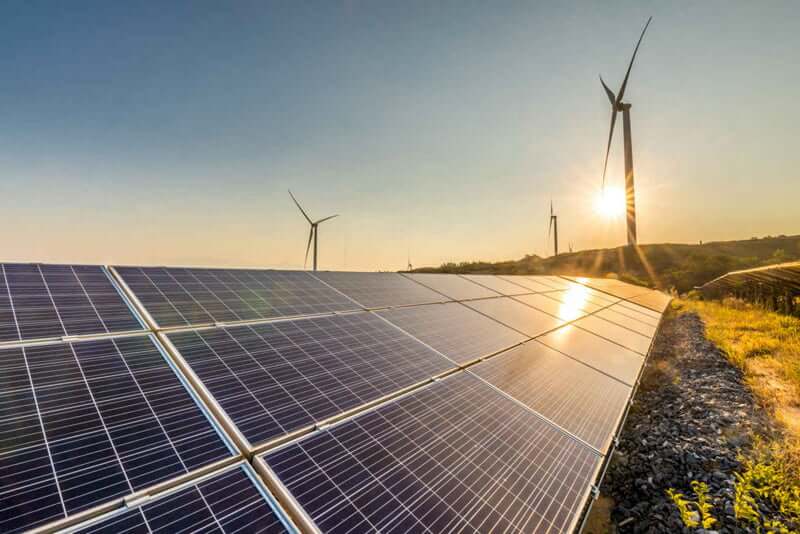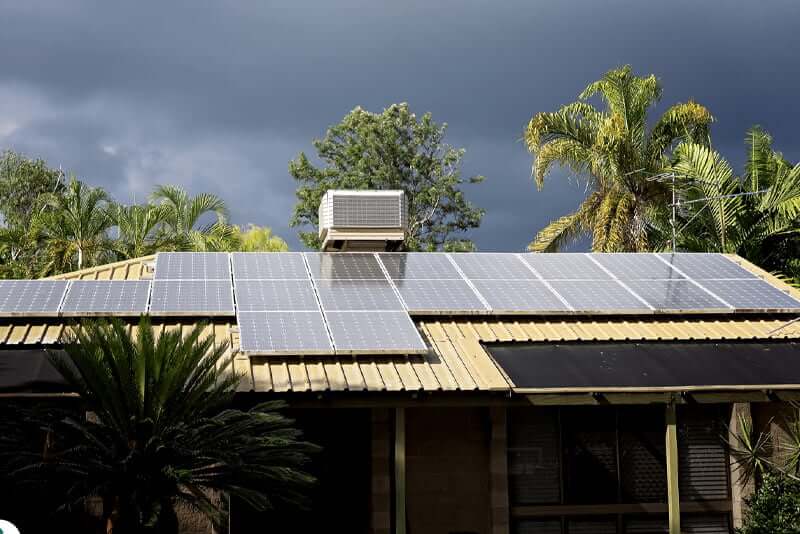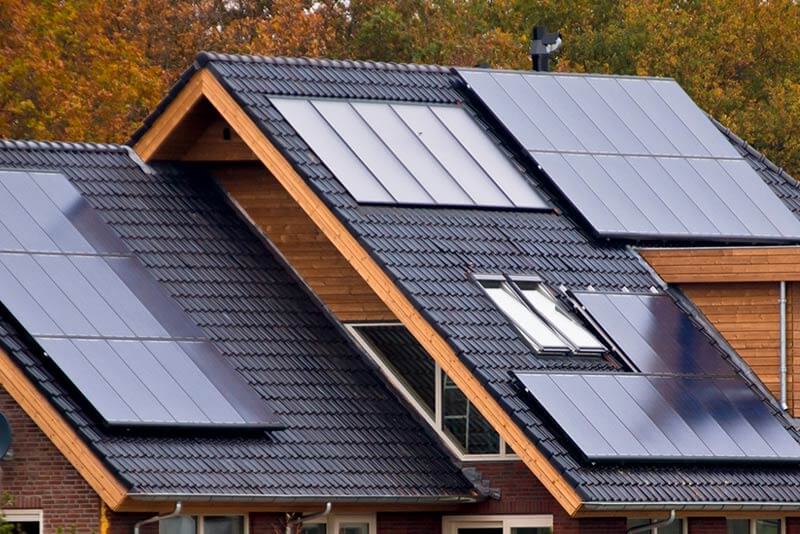Home Do Solar Panels Need Direct Sunlight To Work?
Do Solar Panels Need Direct Sunlight To Work?
It’s pretty obvious that solar panels perform their best and generate the most power when they’re basking in direct sunlight. But, what if direct sunlight isn’t on the cards? Can these panels still produce electricity under those conditions?
Solar panels can still work without direct sunlight because they use photons present in natural daylight to produce electricity. However, there will be a drop in their output without direct sunlight. Solar panels produce electricity using a combination of direct and indirect sunlight as inputs. Both forms of sunlight carry photons, which is what the solar panels convert into electric current.
In this article, you can learn more about how solar panels work in indirect sunlight and how sunlight impacts their output.

Table of Contents
ToggleIs direct sunlight required for solar panels to work?
No, direct sunlight is not required for solar panels to work.
Direct sunlight is only sometimes available in some locations. Buildings, trees, and even weather conditions such as snow, rain, and cloud cover can shield the panels from receiving the maximum benefits of direct sunlight. But this does not mean that the panels will not generate energy.
While solar panels are most efficient and effective in direct sunlight, they can still function in indirect sunlight.
Typically, solar panels convert the photons present in sunlight into electricity. These photons are found in both direct and indirect sunlight. Therefore, without direct sunlight, the panels will generate energy using indirect sunlight alone.
Indirect sunlight occurs when sunlight hits and reflects off of another surface, such as a tree, building, cloud, or snow before it hits the solar panel. While this type of sunlight is still usable, it is usually less effective than direct sunlight.
Do solar panels work in the shade?
Do you live in an area with many trees or buildings and wonder whether your panels can still generate electricity in shady conditions?
Well, yes. Solar panels can still generate electricity in shady conditions, but they will produce less energy than they would in sunnier conditions.
A lot of trees and buildings shade your home, you may need to consider installing a larger solar system to be able to produce the same amount of energy as those whose panels are not shaded.
These factors can determine the impact of shading on your solar system.
Amount and duration of the shade
Panels that are shaded for more extended periods will have a significant drop in their power production. However, the levels of sunlight and shade may vary throughout the day. For instance, your panels may be shaded in the morning but receive ample sunlight in the afternoon.
Also, due to the sun’s revolution, the path of the sun’s rays may change daily. So, the panels may receive more sunlight on some days and less on others.
The type of inverter
Solar panels use solar inverters to convert direct current (DC) electricity to alternating current (AC) electricity. String inverters or microinverters can be used in this conversion.
If central string inverters are used, shade on one panel will reduce electricity output for the entire solar system. On the other hand, if MLPEs (microinverters or power optimisers) are used, shade on one solar panel will not affect the whole system, and it causes only a slight reduction in the overall power production.
Solar panel technology
The technology used to make solar panels can also impact the power output of your solar system. Newer solar modules use half-cut cell technology, which reduces the effect of partial shade. This means that the panels can still generate electricity even if part of them is shaded.
This is, however, not the case with conventional solar panels that do not use half-cut cells.
Do solar panels work in cloudy weather?
Yes, solar panels can still work on cloudy days, but they will not be as effective as on a sunny day. In overcast conditions, your solar system will generate between 10% to 60% of its normal power output, depending on the clouds’ type, thickness, and position in the atmosphere.
Clouds obstruct some of the sun rays from reaching the ground (your roof in this case), thus reducing the number of photons your panels will convert into electricity.
Heat, radiation, and sun rays will reflect off low, thick clouds and disappear into the atmosphere. So, the panels will produce less energy. On the other hand, thinner high-altitude clouds allow more sunlight to reach your rooftop panels.
Also, certain cloudy conditions, such as “cloud lensing,” magnify sunlight, allowing more solar power generation.

Do solar panels work when it rains?
Solar panels will still work even when it is raining. However, rain itself does not have much impact on the panels. It is the cloud cover accompanying the rain that does.
On rainy days, the solar panels’ performance reduces by about 40% to 90%, depending on how big or heavy the cloud cover is. Despite this, rain can be beneficial because it helps clean the panels. This is especially important if you live in dusty or highly polluted areas. Heavy precipitation will wash away the dust and improve your panels’ output.
Do solar panels work when it snows?
Yes, solar panels can work when it snows, provided the snow is not too heavy.
Sunlight can pass through a light dusting of snow. Hence, your panels will still produce energy when it is snowing lightly. You might even be surprised that your panels are performing better in cold temperatures as they are not overheating, reducing their efficiency.
On the other hand, heavy snowfall is now good as it will block sunlight, significantly reducing your solar PV panels’ output for some time. The good news is that solar panels are designed to shed snow, so they will not be entirely blocked from sunlight.
Snow is also beneficial because it washes dust and grime buildup on the panels when it melts.
How much direct sunlight do solar panels need?
Solar panels require an average of 4 peak direct sunlight hours to give you a good ROI. Four peak sunshine hours are equivalent to about 4,000 watt-hours of overall solar radiation.
However, when evaluating how cost-effective a solar system will be, you will want to consider other essential factors other than the amount of sunlight it will receive. For instance, you should consider the cost of panels in your state or city, local utility rates, and government rebates when calculating the payback period of the panels.

Is it possible to charge solar panels without light?
Yes, it is possible to charge solar panels without sunlight. You can use artificial forms of light, like incandescent or fluorescent bulbs, to charge your solar cells as long as the light is strong enough.
However, the current solar cell technology needs to efficiently convert artificial light into useful amounts of electricity.
FAQ's
No, solar panels do not work at night. Solar PV cells require sunlight to produce electricity. You can, however, install a battery storage system to store the excess power generated during the day and use it at night when the panels are not generating any power.
Typically, solar PV cells convert sunlight into electricity. So, panels need light, not heat, to generate electricity. Too much heat can even hinder the performance and efficiency of the panels.
Yes, regular maintenance is required for solar panels to perform optimally. Dirt, grime, debris, tree leaves, and twigs accumulate on the solar panel’s surface over time and can obstruct it from receiving maximum sunlight, thus reducing its performance.
For optimal power production, clean your panels at least every 6 months to 1 year or more frequently, depending on how much dirt they accumulate.
Compare Solar Panel Quotes
Table of Contents
Toggle









